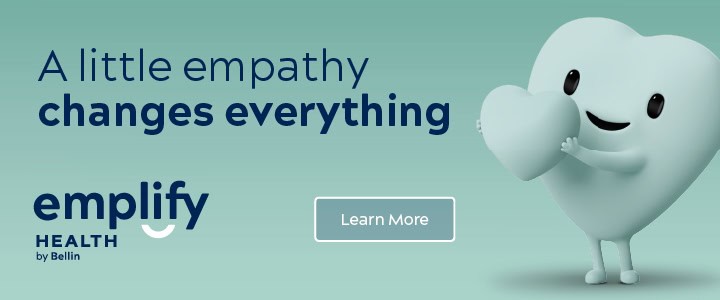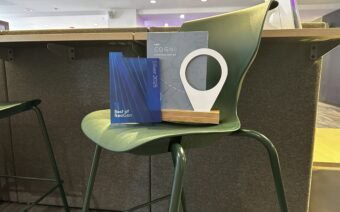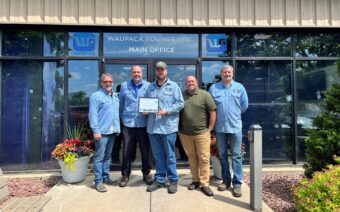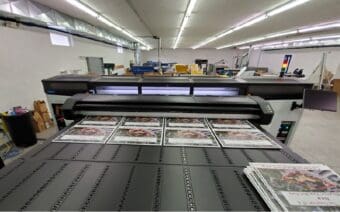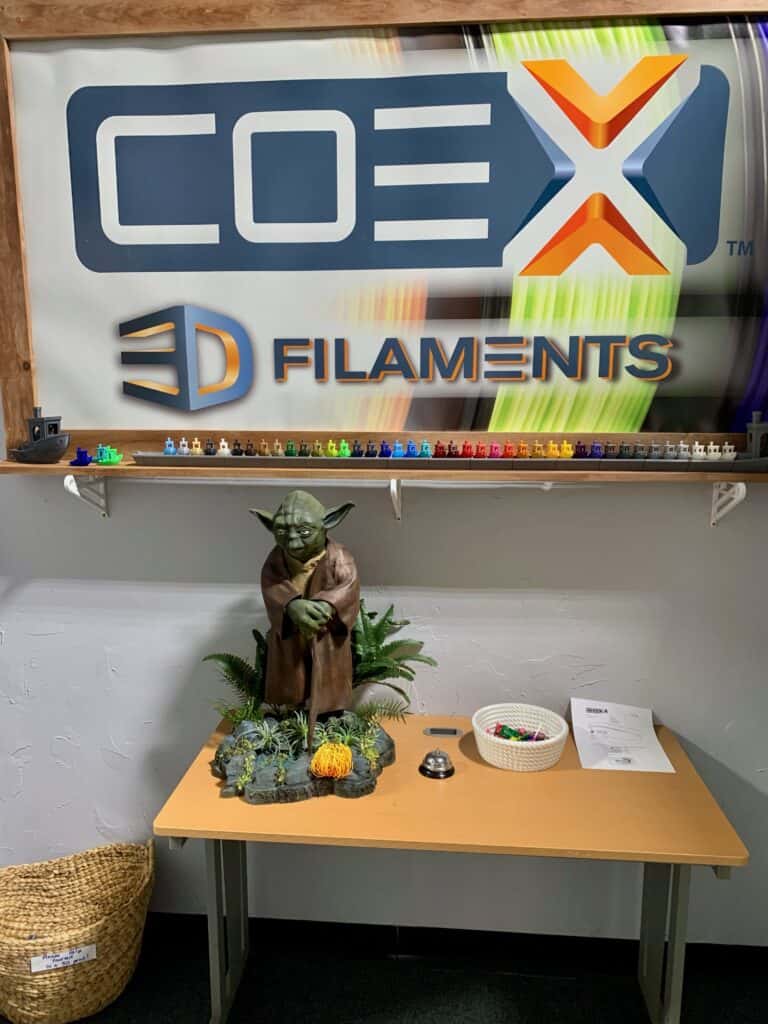
June 17, 2024
GREEN BAY – With the push of a button and a bit of time, a 3D printer can make an object appear out of thin air – one ultra-thin layer of plastic at a time.
The concept – once exclusively the stuff of fiction – has now become real and relatively common, as 3D printing is increasingly employed among commercial manufacturers and private hobbyists alike.
Todd Louthain, owner and director of sales of Coex 3D, said one of the most exciting and surprising aspects of the burgeoning technology is its relative affordability.
“A lot of people hear ‘3D printing’ and they think ‘high-tech,’ and it’s going to be tens of thousands of dollars to get into it,” Louthain said. “Don’t get me wrong – the sky’s the limit (on price range) – but if somebody wants to get into 3D printing as a hobby, they can spend $300 and be printing. If somebody is doing it more commercially, I’d recommend spending a little bit more, but for $1,000, they can have a nice printer.”
However much one spends, Louthain said, a printer can only achieve optimal, consistent performance by investing in high-quality filament – the thermoplastic material used in the “additive manufacturing” process that is 3D printing.
Louthain said Coex 3D’s filaments are sourced exclusively from virgin plastics supplied by U.S. companies as part of ensuring consistently high-quality prints.
“We are one of a small handful of companies throughout the United States that produces filament in-house,” he said. “The number seems to be only about 14 in the entire U.S.”
Louthain said he understands why filament shoppers – like consumers of virtually any product – are tempted foremost by whichever option is priced lowest, yet he said he will always aspire to earn customers rather than “buy” them.

“I want customers who value quality, relationships, good materials and have an understanding it costs more to manufacture in the U.S. than it does in China,” he said. “I’ll never be able to compete with them on price – but I know I can compete with them on quality. And I know I can compete with them on character, personality and competence in our building and customer service. We can compete with them on fulfillment speed. I am looking to grow our business, absolutely – but I’m looking to grow it consciously.”
A new dimension
Louthain said 3D printing itself “isn’t necessarily new” – likening the technology for extruding filament to the process of producing fishing line.
However, he said the printers themselves have only become prevalent and reasonably affordable in the last 10-15 years.
Before this, Coex – sans “3D” – primarily produced plastic spiral bindings for books.
By the time he joined the company in 2020, Louthain said Coex leadership had become aware of the 3D printing industry and the relative similarity between producing its book bindings and the filament, which was newly in demand.
“They were smart enough to be able to see, ‘hey, there might be a future in this,’” he said, “because 3D printing at the time was still expensive. The normal hobbyist wasn’t doing it at home (yet).”
Louthain said the COVID-19 pandemic significantly diminished demand for the company’s book bindings, as plastic-spiraled, multi-page documents formerly distributed in person at meetings and in classrooms had all but instantly become digitized.
Meanwhile, he said, 3D printing was being used to address supply chain disruptions and shortages in personal protective equipment.
Louthain said regardless of how the pandemic may have magnified these disjunctive demand trends, his analysis had already convinced him of 3D printing’s prospects.
When Coex’s owners – like so many business owners at the time – evaluated their plans for the then 25-year-old company, he said the discussions would ultimately lead to the decision to sell Coex to Louthain.
“I found a way to buy it, and then we moved to this building (1228 Elizabeth St. in Green Bay) eight months later,” he said. “I fell in love with the business.”
Louthain said he was able to retain all of the company’s employees as he fully focused the business on 3D printer filament, ceasing the once-flagship bookbinding component entirely.
The two processes, he said, used different types of plastic, and “to try to do both is a nightmare.”
This decision, Louthain said, also meant extra space at the new Coex 3D building, which allowed for the addition of the company’s own in-house 3D printing center to serve companies and individuals who haven’t yet invested in the technology or don’t have as advanced or large-scale printers.
He said the building also enabled Coex 3D to create extra filament and store inventory like never before.
“We keep stock – lots and lots of it,” he said. “We had the space to have the right amount of finished goods so we could ship. We’re proud of the fact we’re about 95% same-day shipments. If an order is placed online, it’ll ship the same day, and if an order comes after 1 p.m., it ships the next day – we still consider it a same-day shipment.”
Layers of service
Louthain said Coex 3D’s then-new website facilitated the company’s increased emphasis on e-commerce.
However, he said his lifetime of sales experience would and continues to inform his interpersonal approach to serving prospective and returning customers.
“If you’re buying a product off Amazon, good luck – you’re never going to talk with the manufacturer,” he said. “The same would be true if (customers) are having printing issues.”

More often than not, Louthain said if somebody’s struggling with getting a print to work, it’s probably not the material’s fault necessarily.
“Sometimes it is – but it could be they need some advice from a settings standpoint – ‘how do I set up my computer the right way? How do I set up my printer the right way?’” he said. “We can guide them through it. Again, that’s something you don’t get from other online companies.”
Louthain said the company is also willing to assist customers in determining which of its five different primary materials and array of color options best suit a desired result.
Some, he said, are better suited to withstand heat, while others are more flexible.
Louthain said he’s also happy to discuss what makes Coex 3D’s filament worthy of a price point “probably 30% higher than what you’d get from China.”
“The quality far exceeds that price differential,” he said. “When somebody is 3D printing something and they’ve taken the time to design it and have their printer do the work, they’re not printing it intending to throw it away – they’re printing it with the intention, ‘I want to make a permanent part that’s going to last for a long time.’”
To ensure prints created with Coex 3D filament are as strong as customers expect, Louthain said the company’s production process includes exceptional measures to dry the materials at the first and last stages.
He said “plastic and humidity are enemies,” as plastic filament that’s absorbed moisture will become “brittle, almost to the point of unusable” in 3D printing.
“Our resin pellets are pre-dried immediately before manufacturing,” he said. “Then, the manufacturing process ironically involves water, so after we manufacture the filament, we then put it in an oven and dry it.”
Louthain said it is an expensive and time-consuming quality control measure Coex can guarantee is not done by low-cost filament manufacturers.
“Many people who are into 3D printing are accustomed to, ‘when I buy a new spool, the first thing I need to do is put it in my filament drier,’” he said. “We always tell people, you surely don’t have to do that with ours because we’ve done that for you.”
Coex 3D’s commitment to using U.S.-sourced virgin plastic resin for its filament, Louthain said, is another matter of ensuring reliable printing results.
Consistent use of source material, he said, leads to filament that melts at a consistent temperature for desired adhesion.
“There are hundreds of variables when you’re setting up your 3D printer, and you could spend a lot of time calibrating it and getting it right so you have a consistent-looking part – so your layer lines and layer bonding are good,” he said.
Louthain said it comes down to all of those variables adding up together.
“And if it’s a commercial print, it might be a two- or three-day print,” he said. “If I find out I don’t have good layer adhesion, and it’s not strong, I may have consumed a couple hundred dollars worth of filament and I’ve certainly lost all that time – and you don’t know until that print is done. So, it has tremendous value, especially to commercial printers, but it should also have tremendous value to the serious hobbyist.”
The other segment of customers Coex 3D strives to serve, Louthain said, is students and educators, as many middle and high schools now offer 3D printing curricula.
“We want to support education,” he said. “We want to support STEM programs, so we offer an automatic 20% educational discount if you’re an education programmer or qualify for a 501(c)(3) nonprofit that’s STEM-based. The world needs designers and people who can create and do things, so we love that schools are offering it.”
Filament for the future
Louthain said Coex 3D constantly avails its expertise to encourage creativity.
“The biggest limiting factor of 3D printing is your imagination – because if you can dream it you can probably build it,” he said. “If somebody wants to create something that’s never existed in this world, and they understand how to use CAD (computer-aided design) programs, they can design it and turn it into a 3D print.”
Louthain said Coex 3D chooses not to sell printers, though the company gladly consults its customers based on its own experience with printers.

Some of the most impactful collaboration with customers, he said, occurs when companies approach Coex 3D to help them create 3D-printed prototypes of parts for manufacturing equipment.
“They’re using it for all aspects of product development,” he said. “You can take that three-dimensional model, load it onto your 3D printer, print it out of plastic and at least be able to say, ‘okay, that fits.’ Form and fit and proof of concept are why a lot of manufacturers will use 3D printing.”
The process is a significant improvement over past practices, Louthain said, wherein companies could spend thousands of dollars and several months to directly invest into costly molds – all the more expensive when redesigning is necessary.
3D printing, he said, can also make parts previously impossible via traditional plastic-injection molds.
Louthain said Coex 3D works with companies to help solve these pain points with the potential of 3D printing.
Though Coex 3D sells its own print services, he said he often discusses with companies the advantages and applications of establishing their own in-house 3D print system.
“That consultative-type service is part of what we do,” he said. “We don’t charge for it. We hope we can show a company how 3D printing can be beneficial to them. If they choose to invest, I hope they purchase our filament to use down the road. It’s the whole, ‘teach a man to fish’ philosophy.”
Louthain said it’s also common for companies to approach him who have already invested in 3D printing, yet know they aren’t using it as well as they could, or have even given up trying.
Providing such consideration and value, he said, is the type of relationship-based, word-of-mouth growth Coex 3D seeks.
“When our customers find out we are here – especially local customers – they get excited about it,” he said. “We run into that all the time, where people say, ‘we’ve been printing for a long time, and we didn’t know you were here.’ And they tend to become loyal customers.”
Above all, Louthain said, it’s the possibilities and increasing availability of the technology that continually excite him.
“It’s not limited to a certain type of person, category, business or application,” he said. “To me, that is the most fascinating part – people will use 3D printing in creative ways. It helps dreams become reality.”
Visit coex3d.com for more information.
 ARPA funds help nonprofits address childcare accessibility
ARPA funds help nonprofits address childcare accessibility Two artists + two dogs + woodworking + polymer clay = Fat Duck Designs
Two artists + two dogs + woodworking + polymer clay = Fat Duck Designs

